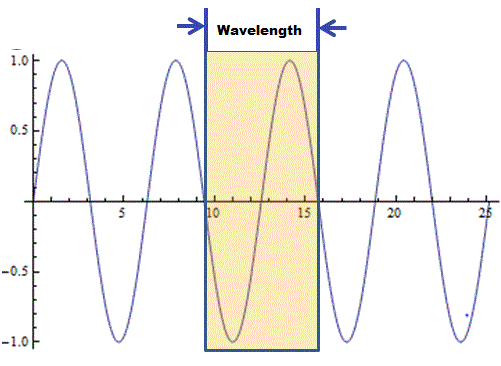You are sensing light from your computer screen. Your eyes respond in different ways to different colors of light. Your eyes do not respond to certain colors of light at all. All light is part of what is called the electromagnetic spectrum. Light is a wave (like a wave on a lake or ocean or a ripple in a pond). Only a small portion of the electromagnetic spectrum is visible.
 |
| Photo Courtesy of NASA kids: http://science.hq.nasa.gov/kids/imagers/ems/index.html Only a small amount of all the light out there we can actually see. Visit NASA's site to learn more. |
What are the differences between red, orange, yellow, green, indigo, and violet? What is the difference between light that you can see and light that you can't see? In a vacuum, they all would reach your eyes at the same time. They do have different wavelengths, frequencies, and energies. "Wavelength" refers to the distance between two identical parts of a wave. Frequency refers to how many times a wavelength passes you in a second.
For those of you who like multiplication and division, a handy equation relates frequency and wavelength:
c, f, and λ are called variables. They each stand for some number. For example, f could be 1, 1.5, 4, or any other number. Similarly, λ could be some other number. f is the frequency of the light, while λ is the wavelength of the light. c is the speed of light, which a constant. Because of this equation, if you know the frequency of the light, you also know its wavelength.
When your eye senses a wavelength in the red range, you see red. When your eye senses a wavelength in the yellow range, you see yellow.
You may now ask where the light comes from. Sure, the light from your computer comes from a light in your computer, but what about the table your computer is sitting on. You can't see that table in the dark. Your table absorbs some wavelengths of light like a sponge soaks up water. Other wavelengths, though bounce off. You can see these wavelengths that bounce off. The wavelengths that bounce off determine what color you see.
You may now think: I see where color comes from for light bulbs and I see where color comes from for reflections. What's the deal with color that comes comes through colored glass? White light is when you have all different wavelengths of light together. This white light hits the colored glass and some travels through. Some of it also is absorbed like a sponge. On the other side of the glass, you see the light that was able to pass through. A good website for more information is here.



No comments:
Post a Comment